---------------------------------------------------------
This simple question has dozens of answers. When a mother chicken hatches out her brood, she will usually take her chicks out for their first adventure in the new world by day 2. Clearly, chicks can handle being outside right from the beginning. But that mother hen is a portable source of heat & security and leads her babies to food & water as needed. As a human raising chicks, we need to rely on heat lamps, secure coops & brooders, and feed & water located where the babies can easily find them on their own.
Generally speaking, your chicks should be mostly feathered, and outgrowing their brooder box around 4-6 weeks (and you are probably ready for them to get out of your house!). But the exact time you can move your chicks outside is going to depend on your set up & your local weather more than an arbitrary age.

Temperature
If you started your chick’s brooder temperature around 95 degrees and have been decreasing it by 5 degrees per week, by the 5th week you should be around 70 degrees. If you are brooding your chicks in your house, you might be able to take the heat lamp away around now as you are probably close to the ambient air temperature. To take those chicks and suddenly put them outdoors in 30 degree weather would send them into shock and could have dire consequences.
The first couple of weeks chicks are only covered by fluffy down. Until chicks have feathers, they can’t properly keep body heat in so having an external heat source is necessary. By 4-6 weeks they should be feathered enough where they can handle chillier temperatures – but these baby feathers have their limits. In southeast Massachusetts I usually have to wait until mid/late May before evening temperatures are warm enough for chicks to live outdoors full time without heat. My general guidelines are over 4 weeks AND nighttime temps in the mid 50s.
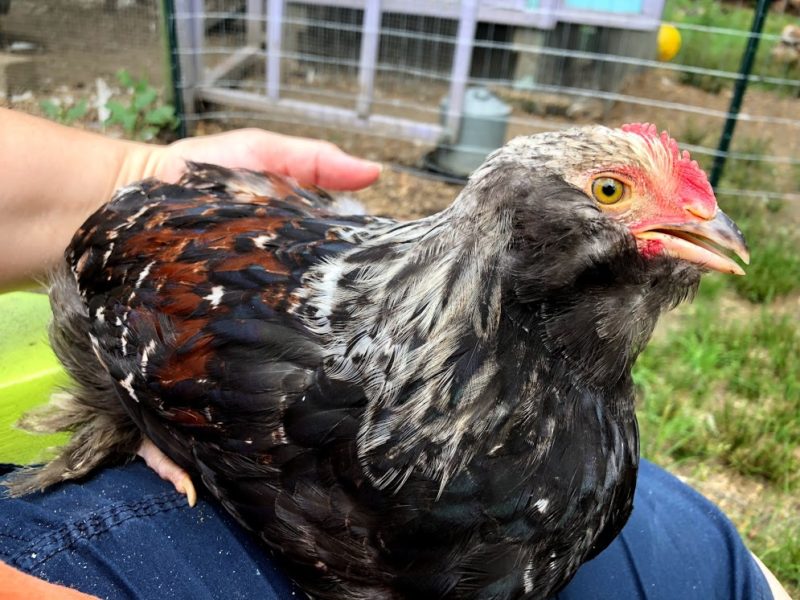
If you live in warm climate, or are brooding chicks during the summer, you might be able to move them straight outdoors after a month as long as the nighttime lows cooperate.
What do you do if you don’t live in a warm climate but you need to get the chicks out of your kitchen because they need more space (or because of the smell)? You could look to your basement, garage, or 3 season porch, as a good “bridge” between indoor living and outdoor living. You can also start bringing them to their outdoor coop during the day, but still bring them inside to warmer temperatures at night.
If you are thinking of moving your girls outside along with their heat lamp, I would suggest you think again. Heat lamps can cause fires so putting your chicks out in their new coop with a heat lamp where you can’t monitor it could be a dangerous idea. Ideally by the time you move your chicks outdoors, they won’t need additional heating.
If you have a radiant chick heater (like Brinsea’s EcoGlow) they are much safer than traditional heat lamps. Keep in mind most radiant heaters are not designed to work when the air temperature is below 50 degrees, but I have found if temps are in the 40s and your chicks are at least a month old and feathered it can be enough to keep them comfortable. You will know if your chicks are too cold, you will see them all huddled together and chirping loudly at you.

Security
Another big factor in bringing your chicks outside is security. They will love having more room to run and stretch their wings but they are utterly defenseless so you can’t just toss them out into the world.
Ensure the place you are putting them is totally secure. If it is an outdoor run it should be totally covered on all sides (including the top). If you are moving them to a coop but not giving them outside access yet, make sure there are no small crevices where they could get stuck or could sneak outside.
I would not suggest giving them a huge area to roam. 2 square feet per bird for 5 week chicks is plenty. The bigger the area, the harder to secure it. You also want to make sure they can easily find their way to food & water.
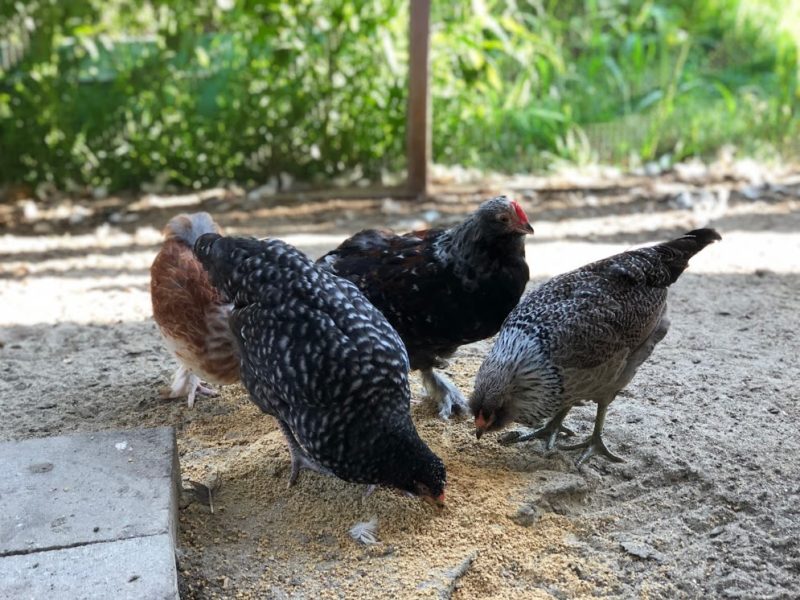
Other Birds
If you have other chickens the chicks will be joining, special considerations will have to be made. The chicks will still be outgrowing their original brooder and still be ready to move outside around 4-6 weeks, but they will definitely not be ready to meet their grown up chicken friends.
Ideally, you should hold off until 10-12 weeks before you let your young chicks mix with your adult hens. When you mix them together, there will be bullying. They need to establish the pecking order and your older girls will not hesitate to let the babies know their place is at the bottom.
Some hens might just take a swipe with their beak, others will mercilessly chase the new birds down and peck at them. Unfortunately you won’t know how your girls will react until you add the new birds. Sometimes even the sweetest hen suddenly is the biggest bully. An adult hen could easily kill a young chick. By 10-12 weeks your chicks will by fully feathered and getting close to their full grown size. They will be better able to handle the older hens.
I like to start the initial introductions much earlier than 10-12 weeks. Usually around 6 weeks of age I will set up an area in my chicken coop for the chicks to live for about a month. During that month, the old flock and the chicks will be separated by a wire partition. This way the older girls can see the babies. They get used to seeing & smelling them in their space. But the babies are safe behind the wire where they can’t be hurt.
A month later (when they are 10 weeks), the chicks are released during the day only. Then 2 weeks later (when they are 12 weeks) the wire partition comes down all together and the flocks are fully integrated. Click here to read more about introducing chicks to your flock
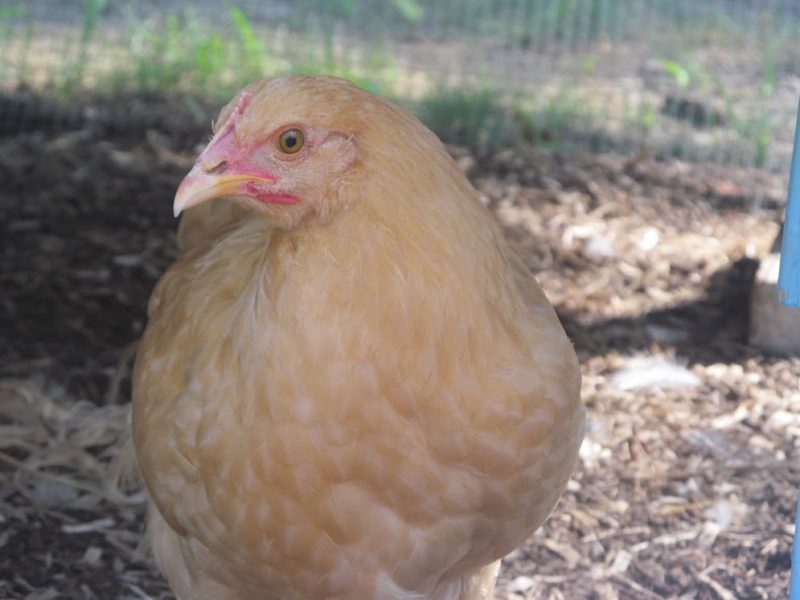
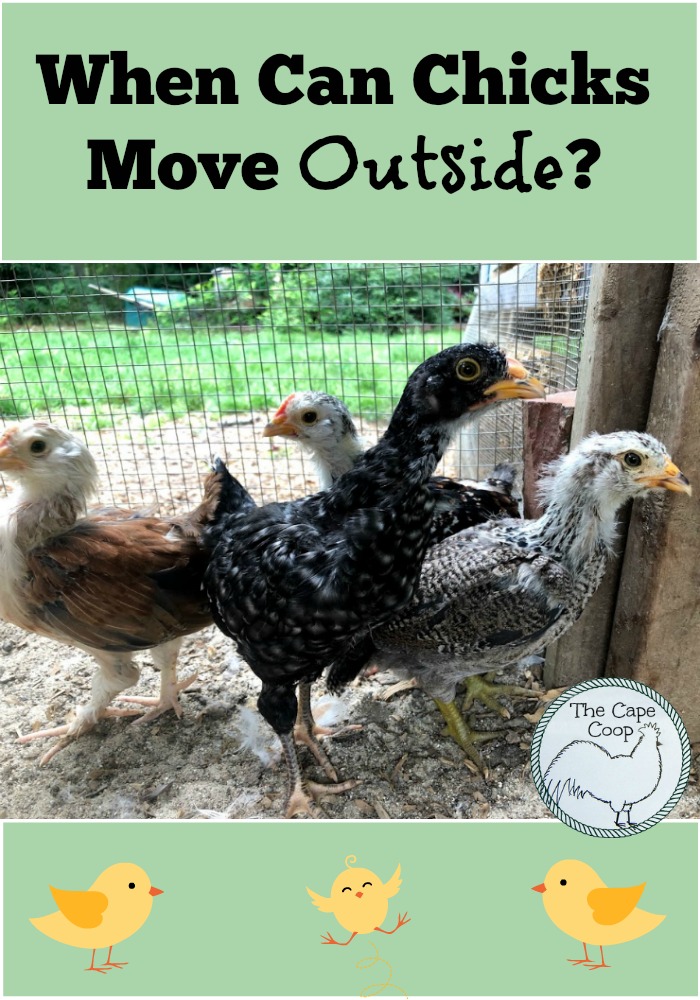





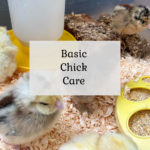
Rita
Wednesday 27th of December 2023
I have found that just having the hen and the chick's in their own coop outside, since day 1, has actually been really easier than when I started without a hen and had purchased them. That was a round the clock supervision, inside the house, heat lamp and messy mess to clean all the time. So much easier with her keeping them warm on the chilly nights, and outside in a new coop but still around the other part of the flock that can't get at them. Just keeping them fed, watered and clean area has been easy. Totally different experience than when I store bought them. Nature at its finest. I'm just hoping out of the 5 none are roosters I already have 2..
Liz
Wednesday 27th of December 2023
Absolutely the easiest way to go! Hens are amazing mothers. But as you mentioned hatching your own eggs can result in too many roosters. hens are such good mothers they don't even need to actually hatch the eggs to raise the chicks though. If you have a hen that is set on being broody, you can sneek day old chicks under her and 95% of the time she will adopt the chicks as her own and raise them. This way you can purchase all female chicks but still let the hen raise them so you don't have to clean the brooder!
Kat
Sunday 29th of October 2023
We have two grown chickens, and are preparing to add eight chicks that are now about 7 weeks old. They are outgrowing their brooder so we are preparing a fenced off area in the run, but wondering if it's ok for them to sleep in that area at night. We will have a plywood roof for their area, and one side will be fenced by brick. Will that feel safe enough for them, or should we be bringing them inside at night? Low temps are not an issue for us.
Liz
Sunday 29th of October 2023
As long as your run is completely predator safe it would be ok for them to sleep in the run. They will feel much safer if you provide them with something to sleep in inside the run though. It could be as simple as their brooding box turned on it's side, a dog house, or a cardboard box. But again just be sure your run is totally predator proof before leaving the little ones outside at night. Good luck!
Michelle
Wednesday 3rd of May 2023
hello!
My first time ever having chicks and I lost 1 out of 6 but successfully treated pasty butt! She is still way behind the rest of her sisters for growth and feathers though. What can I do to get her further along? They will be 6 weeks On may 17th and I was going to let them go to the barn but she isn't ready. Also if I do keep her inside won't they not accept her once I release her out to them?
Liz
Monday 8th of May 2023
Good job treating the pasty butt! You are right, if you separate them they will likely not accept her when you reintroduce them and you will have to go through the whole introduction process. If you are offering them grit, you can try giving her some high protein treats like dried meal worms. Feathers are largely made of protein and protein also supports growth. But you still have a week or two before your planned move I bet you will be surprised how fast they grow and change between now and then!
Katanahamon
Wednesday 28th of April 2021
I see so many (older) beginner care or chick sites that the comments are closed recommending lamps. I think they should be phased out simply for safety and welfare reasons. I learned that chicks are very sensitive to light, I unthinkingly shut off a light abruptly late when I usually do it earlier, and they really freaked out! I leave a little Japanese paper lantern type dim light on at night for them, it was on, but they don’t like the abrupt shift. I think a bright light 24 hrs on is not good, and they just cause completely unnecessary fires. My girls (please, please all be girls..!) are three weeks received tomorrow. I lost one, and I’ll never know why..two weeks in, she had been perfect, she was eating lying down. Over the next four days, she just deteriorated, (all vaxxed for Marek’s and coccidiosis) and when she wouldn’t eat s rambled eggs, and couldn’t keep her legs under her, I decided to use a carbon dioxide tank from brewing to put her down. I bawled, but it was nagging at me to stop her suffering, protect the others just in case, and to stop her getting trampled in her final moments..still..I worry I was premature. I had put her back on probiotic, vitamin electrolyte vinegar water, after five days I went to plain filtered water with apple cider vinegar as per Gail Damerow’s recommendations for chicks, but, she was so, so pathetic with these weak, tiny peeps, it broke my heart to put her down. I guess if I had waited, she might have just suffered longer, my gut was telling me she wasn’t going to make it. I just don’t know why..could it have been Marek’s, it was exactly two weeks, or, did she get a crush injury, was that why her legs were weak, or, or, or, or.......
Liz
Thursday 29th of April 2021
Awww it is always hard when you lose one. I have learned over the years there are just some chicks that simply fail to thrive and there isn't much that can be done about it. It sounds like you did everything you could for her. I agree I think heat lamps should be phased out. The constant light does make them grouchy because it interrupts their natural sleep cycles. When I used heat lamps I would use a red filtered bulb which is a little nicer on their eyes because it's not the glaring white light, but they still carry the fire risk. With the availability of the radiant chick heaters that is definitely the way to go for safety and chick happiness!
Kinsey
Tuesday 27th of April 2021
Hello! I have been using a radiant heat plate with 9 mixed bantam chicks who are going on 5 weeks old now, the weather where i am is mid 40s at night, and 60s during the day. my dearest husband would really like his garage back. My question is when is it safe to put them in their coop, and i mostly mean i will turn the enclosed coop area into their brooder. i will pile high with shavings and ill put their heat plate in there as well. i would *like* put them in there at around 5 weeks, keep them enclosed primarily in the inside part of my coop, until they are 6-7 weeks. they are currently in an un insulated garage that tends to run about 57-59 at night, i have a radiator style space heater near them but mostly to keep one side near their heat plate warm as it doesnt warm the entire garage much. when i ask in groups on facebook, i just get oh they need 75 degrees at this age bla bla, but nothing logical because they will still have their heat source. do you think i should wait another week or two, (such as 6 weeks? ) thank you!
Liz
Tuesday 27th of April 2021
I would highly caution you not to use a space heater in the coop, especially if it is piled high with shavings. Heat lamps and space heaters cause hundreds of coop fires every year. The radiant panel chick heaters are safer but are designed to be used indoors. They don't work very well when the ambient air temperature is below 50 degrees. All of that said, you could turn your coop into a "large brooder" with your radiant chick heater. I would not pile the shavings near the radiant chick heater just to be safe however. I have found if the air temperature is in the mid 40s and the chicks are over 5 weeks they are usually fine with a radiant heater. My advice would be to ideally wait until 6 weeks of age if possible, and then give it a shot. Put them out there and see how they do, checking on them several times at night. If they are yelling and huddling together under the heater they are cold and you might need to bring them back inside. If they seem fine to be out from under the heater to go eat and drink they should be ok.